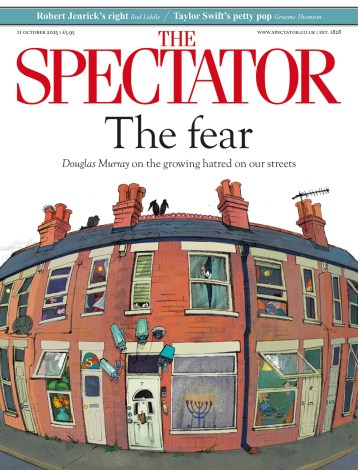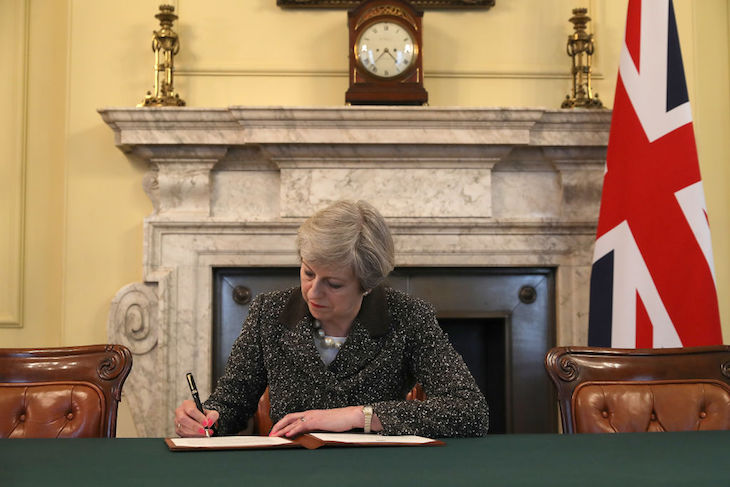While the rest of the country waits for this spring to arrive, in Westminster the talk is all of spring 2019. That’s when the United Kingdom formally leaves the European Union, and when a slew of cabinet ministers think the Tory leadership contest will begin in earnest. But something else will happen in the spring of next year that will be almost as important: the review setting out departmental spending from 2020 to 2023.
It will reveal how the Conservatives intend to fight the next election: do they plan to take on Jeremy Corbyn with a no-new-taxes pledge or will their strategy be to say that they are increasing spending but more responsibly than Labour would? When I asked one minister which approach the cabinet would plump for, I was told: ‘That matter is up for debate and is heavily contested ground.’
I understand that roughly a third of the cabinet favours tax rises to pay for increased spending, a third favours spending restraint and no new taxes, and another third is undecided between the two courses.
The Office for Budget Responsibility’s deficit projections assume that government spending will simply rise in line with inflation, but it isn’t hard to see where and why there’s mounting pressure for above-inflation increases. The most obvious of these is the health service. There is now near-universal acceptance on the Tory side that the NHS is going to need substantially more money in the coming years. It is not just Boris Johnson who is banging this drum. Jacob Rees-Mogg, the most fiscally conservative of those tipped to run for the leadership, has gone out of his way to make clear that he, too, is sympathetic to the idea of extra cash for the health service.
But the amount of money that could end up being spent on the NHS is eye-popping. Simon Stevens, the chief executive of NHS England, thinks that another £30 billion —equivalent to 6p on the basic rate of income tax — is needed if the UK wants a health system in line with that of other wealthy northern European democracies.
Even if the government doesn’t go for anything as radical as that, the sums involved will still be substantial. Before last autumn’s Budget, Stevens was pitching for that £350 million a week the Leave campaign had supposedly promised the NHS and making clear the health service needed an extra £4 billion a year just to get back to its usual levels of service. In the end, the NHS only received an additional £1.6 billion from Philip Hammond.
What Stevens thinks matters, because one of the reasons that public concern over the health service has skyrocketed in recent months is that the NHS has essentially accepted that there has been a winter crisis, cancelling all non-urgent surgery for a month. The Tories might not be able to beat Labour on the health service, but they can’t fight an election with it as an open wound. By 2022 they will need to come up with a funding package for the NHS its senior management can accept. They managed to take health off the table as an issue in the 2015 election by committing to funding Stevens’s five-year plan for the NHS. They’ll need this kind of shield again to parry the inevitable Labour attacks on the NHS.
Other Tories, encouraged by the Defence Secretary, Gavin Williamson, want to see more spent on the armed forces; they want to ensure that Britain can still play a global military role, as well as contributing to European security after Brexit.
Then there are a sizeable number of Tory MPs who believe that one of the lessons of the last election campaign is that proposed changes to school funding really hurt them with parents.
The rise in crime might mean a rise in cash for the police, too. Labour’s attempt to link the cuts in police numbers and the return of violent crime makes many Tories think he party needs a defensive strategy on this issue. Meanwhile, local government (which was George Osborne’s cut of choice: the 2010 spending review reduced direct grants to local government by 27 per cent) is struggling. Northamptonshire, a Tory run-council, is essentially bankrupt, while the Chancellor’s local council, Surrey, has a £105 million funding gap.
There is also the issue of Brexit to contend with. It may well cause some short-term economic disruption, leading to a fall in tax revenues. But even if it does not, putting in place a new customs system, a new immigration regime and the like will all cost money.
This analysis might suggest that tax increases are pretty much inevitable. But this is not straightforward. The tax burden is already set to rise to the highest level in 40 years, according to the Institute for Fiscal Studies. Jacking it up still further could well have a deleterious effect on growth — politically speaking, it would also cause the Tories problems. Some would ask what the point of a Tory government is if it simply presides over an ever-increasing tax burden? A Tory government that sees home ownership rates go down and the tax burden go up would be undoing much of the good work of the 1980s. Raising taxes would mean the Tories couldn’t run on a no-new-taxes pledge against Corbyn, and voters might decide there really isn’t that much difference between the two.
So, what’s the way out of this for the Tories? Well, there are some early indications that the Office for Budget Responsibility might have been too pessimistic in downgrading productivity. If this is the case, then growth could be better than expected. This would ease the situation somewhat. A new Tory leader could also do some things differently. He or she could embrace proper planning reform, which would give the economy a boost, allowing both more house-building and the expansion of the most dynamic cities in the country. They could also pursue a big tax reform programme: simplifying the current over-complex system and making it more suitable for the modern economy. As one minister who favours a radical approach puts it: ‘The weather is not in our favour. So we need to change the weather.’
But ultimately the Tories are going to have to decide how big they want the state to be. That is the fundamental question.







Comments